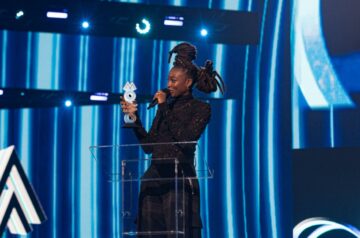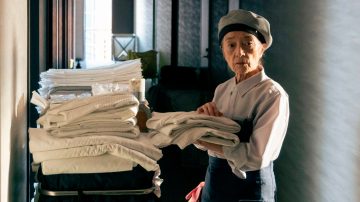
As the new trailer for The Batman lands, here’s how Warner Bros has tried to keep the Caped Crusader fresh on the big screen…

Robert Pattinson pictured during the filming of The Batman movie outside St. George’s Hall on October 14, 2020 in Liverpool. (Photo by Colin McPherson/Getty Images)
The arrival of the trailer for next year’s The Batman continues to take the veil off arguably 2022’s most anticipated comic book movie. It’s testament to the popularity of the character that – in spite of some spectacular peaks and troughs over the years – interest remains sky high. For Warner Bros, the Dark Knight is the most valuable hero on its asset book (even more so than Superman), and ever since 1989, he’s been somewhere in the midst of the studio’s blockbuster strategy. But it’s taken a fair few big screen reboots along the way to keep the Bat alive…
The moody one
When Tim Burton agreed to take on directing what would become 1989’s Batman, the character was still generally regarded as campy, comedic, and very much in the tone of the 1960s television series and 1966 movie. Far more kapow, far less scowling. In the aftermath of the success of Superman: The Movie in the 1970s, a ten year journey to bring Batman to the big screen began, and instantly it was clear it was going to need to go darker.
The arrival of the trailer for The Batman continues to take the veil off arguably 2022’s most anticipated comic book movie
Key to both the studio and fans accepting that was Frank Miller’s stunning 1986 comic book series The Dark Knight Returns, a hugely-acclaimed four-part story that demonstrated the darkness of the character and a viable way forward on the big screen. Mind you, when Burton then cast his Beetlejuice star Michael Keaton as Batman, the fan backlash was not on the quiet side.
Burton made his film against a backdrop of studio and producer pressure, entering production without a finalised script and with writers scrambling to come up with a satisfying ending. But still, a hype machine was whirring, and a genuine phenomenon was the result. When the film was released in 1989, it was a Batman that hadn’t been seen on the big screen before: dark, cold, overshadowed by his nemeses and not in a good mood.

Tim Burton made his version of Batman against a backdrop of studio and producer pressure.
The film was a sensation, albeit one its director wasn’t massively fond of. He needed more creative control for its inevitable sequel and duly got it: 1992’s Batman Returns remains one of the most unblockbuster-y blockbusters of its era. Pitting Batman against a trio of villains (again, following roughly a path set by Superman II there), Burton’s movie had S&M undertones, a villain biting through someone’s nose, parents up in arms, and McDonald’s distressed that its Happy Meal tie-in appeared to be for such a dark and divisive film. It was only a few steps removed from trying to sell burgers alongside David Fincher’s Se7en.
What spooked Warner Bros though was that the box office was significantly down on the last movie. Even appreciating this was an era where sequels weren’t expected to make as much cash as the film before, it was a big enough fall for the studio to consider its options. And with Burton reluctant to return for Batman 3, a parting of the ways gave Warner Bros its shot.
What spooked Warner Bros though was that the box office was significantly down on the last movie
The not moody at all one
The late Joel Schumacher was riding high at Warner Bros in the 1990s, off the back of the acclaimed drama Falling Down and the best John Grisham adaption The Client. He was sounded out about taking on Batman 3, and would jump at the chance. But the brief was that the studio wanted a lighter film: boy, did it get it.
Schumacher got his chance at a relatively clean slate when Michael Keaton followed Tim Burton out of the door (Rene Russo had been mooted to star alongside him, but she was out of the picture when Keaton went). Warner Bros wanted a younger Batman, and quite fancied bringing the merchandise-friendly Robin on board too Thus, Val Kilmer and Chris O’Donnell respectively got the nods, although only one of them would make it to the next picture.
ArrayWhere Burton went for darkness, Schumacher went for lightbulbs. Every time Burton looked at the tins of black paint in the aisles of B&Q, Schumacher could be found gawping at bright colour charts. The resultant 1995 movie Batman Forever might not have won over comic book fans, but studio accountants were happier, and McDonald’s managed to flog a few more burgers. The film’s box office returns were up, and thus the studio wanted more. What followed remains infamous.
Schumacher and his team turned around Batman & Robin in under two years – and that included filming another movie, A Time To Kill – and it proved a carnival of brash, neon excess desperately in search of a screenplay. In spite of attracting one of the world’s biggest movie stars as its villain – Arnold Schwarzenegger – and the fast upcoming star George Clooney replacing Val Kilmer in the suit, it was a notable Hollywood disaster. Hostile reviews, box office well below expectations and the kind of response that threatened to end careers, Batman & Robin would lead to an abrupt termination of the Bat franchise. It’d take a long time for it return.
Would he be interested in reviving Batman? Yes, Christopher Nolan would…
The wilderness years
Gotham City lay empty for several years after the Batman & Robin debacle. Schumacher abandoned his plans for a further Bat adventure, and Warner Bros took everything back to the drawing board again. It knew it had all gone too bright, removing the darkness from the central character. It looked around for a grittier reboot, and for a while settled on the comic book Batman: Year One. This tells the story, as the title suggests, of a new and raw Caped Crusader. Director Darren Aronofksy, who’d sprung to fame off the back of Pi and Requiem For A Dream, developed the project, but in the end, the studio got cold feet.
In the end, an offer went in to a young, upcoming director who’d helmed a remake of Insomnia for the studio, to notable success and acclaim. Would he be interested in reviving Batman? Yes, Christopher Nolan would…

Christian Bale arrives at the UK film premiere of The Dark Knight in 2008. (Photo by Gareth Cattermole/Getty Images).
The swear to me one
By the time Batman Begins landed in cinemas in the summer of 2005, the character had – aside from ongoing animated adventures – been away from screens for the best part of a decade. Nolan needed to produce something spectacular to win people back over. It’d be fair to say that’s just what he managed to do.
Casting Christian Bale as the lead character, Batman Begins wore its Year One influences, and was a top-to-bottom reboot for the franchise – a reboot so influential and effective, the following year’s James Bond film Casino Royale was clearly heavily leaning into it. Batman Begins wasn’t the most successful Dark Knight movie at the box office, but perhaps it was the most important: a mission statement, a testament to just what a comic book movie could do.
Perhaps it was the most important: a mission statement, a testament to just what a comic book movie could do
This was Batman’s finest time on the big screen. Across seven years and three films, the Dark Knight trilogy soared, and became the template – well, until Marvel came along – that others were looking towards. Nolan himself helped point the character of Superman that way, instrumental in the Zack Snyder-helmed Man Of Steel coming together. And unbeknownst to him at the time, Nolan had found the person to pass the bat-on (apologies) onto.
The Affleck-y one
Empire magazine signed off its review of 2012’s The Dark Knight Rises by saying heaven help who has to reboot this. That job fell to Zack Snyder, with his pseudo-sequel to Man Of Steel, Batman V Superman: Dawn Of Justice. Ben Affleck this time was recruited to play a slightly older Batman, the only actor cast in the role who never got a standalone film.
His Bat thus at best had a co-starring role in the films he appeared in, with 2016’s Suicide Squad and 2017’s Justice League the other on-screen appearances. There had been talk of Affleck – an Oscar-winning helmer, of course – directing a standalone Bat film, but those plans gradually rescinded.
His tenure in the role was thus defined by Snyder’s long films, love of slow motion and a level of downbeat brooding that made Burton’s Batman features look like bright song and dance grin-fests. Some like what Snyder and Affleck had done, others didn’t, but it was clear things had changed notably from the Nolan era. With Warner Bros and Snyder parting ways over the contentious Justice League – a story and a half in itself there – Batman was back in limbo.
We find out how successful it’s been in March of next year. Or whether another reboot will be needed…
The new one
Now, all eyes are on a new team. Matt Reeves, who helmed two of the recent Planet Of The Apes reboot films, is behind the camera. Robert Pattinson meanwhile is the new Bruce Wayne/Batman, and we’re back to the idea of an inexperienced crime fighter. The second year of him being Batman, and it looks as though Paul Dano as The Riddler is the main foe this time around.
Warner Bros will be hoping for a fresh course correction here, and to get a new series of Batfilms back up and running. We find out how successful it’s been in March of next year. Or whether another reboot will be needed…



